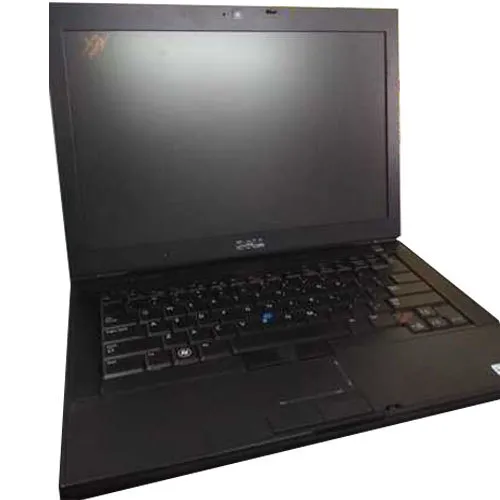Virtual reality (VR) technology has proven itself as a transformative force, delivering riveting, immersive experiences that blur the line between the physical and digital realms. One aspect central to this impressive capability is the frame rate of VR headsets, a term often used in discussions of VR performance and quality. This article will provide the latest information on “What Does the Frame Rate of a Virtual Reality Headset Indicate?”.
What is the Frame Rate in Virtual Reality Headsets?

The frame rate of a VR headset, sometimes also referred to as the “refresh rate,” essentially signifies the speed at which the display updates the images you see. This metric is calculated in frames per second (FPS). Higher frame rates contribute to smoother motion, leading to a more immersive and realistic VR experience. Conversely, a low frame rate may result in choppy, disjointed movement, disrupting the VR immersion and sometimes leading to discomfort or motion sickness.
The Significance of Frame Rate in Virtual Reality

Just as a high-definition screen brings out more detail in an image, a high frame rate in VR contributes to smooth, seamless motion. This fluidity is a cornerstone of the immersive VR experience, allowing users to engage with digital content as naturally as they would with the physical world. This effortless interaction is especially vital in fast-paced VR games and applications, where the success or failure of a user’s action might hinge on a split-second difference.
What is the Ideal Frame Rate for Virtual Reality?

There is a consensus among experts that for a truly comfortable and immersive VR experience, the ideal frame rate should be at least 90 FPS. This benchmark ensures that motion within the VR environment appears smooth to the human eye, enhancing the feeling of ‘presence’ — the sensation that you’re genuinely inhabiting the virtual space.
Understanding Frame Rate Impact on VR Performance
Frame rates are critical for VR performance. A consistently high frame rate ensures that your virtual actions and the system’s response remain synchronized. This consistency is what allows you to move, react, and interact seamlessly within the VR environment, maintaining the illusion of a different reality.

However, if the frame rate drops, this illusion can quickly shatter. Lower frame rates may cause noticeable lags between your actions and the system’s response, creating a disjointed and disorienting VR experience. In extreme cases, low frame rates may even contribute to VR-induced motion sickness.
The Interplay Between Frame Rate and Motion Sickness in VR
One of the most significant challenges in VR is motion sickness, a discomfort caused when your brain receives conflicting information about motion from your senses. In VR, this usually occurs when the frame rate is too low, creating a disconnect between what your eyes see and what your body feels.
Maintaining a high frame rate helps to mitigate this problem. When the frame rate matches the speed at which our eyes naturally process visual information, it greatly reduces the risk of VR-induced motion sickness, allowing for longer and more comfortable VR sessions.
Distinguishing Between Frame Rate and Refresh Rate in VR
While frame rate and refresh rate are often used interchangeably, there is a subtle distinction. Frame rate refers to how often a new image is produced by the source (like a game console or computer), while the refresh rate is the speed at which the display device (in this case, the VR headset) updates with new images. Ideally, these two rates should match for the smoothest experience.
Choosing the Right VR Headset: The Frame Rate Factor
When selecting a VR headset, it’s vital to consider the device’s frame rate capabilities. While most modern VR headsets meet the recommended 90 FPS standard, some high-end models boast even higher frame rates, enhancing the smoothness and immersion of the VR experience.
The frame rate of a VR headset serves as a reliable indicator of its performance and the quality of experience it can provide. By understanding this key aspect, you’re better equipped to make informed decisions about your VR equipment and fully immerse yourself in the limitless possibilities of virtual reality.
How to Improve the Frame Rate of My Virtual Reality Experience?
Ensuring your VR setup is powered by a robust computer system can significantly improve your VR frame rate. Additionally, reducing the graphic settings or resolution in VR applications can also help increase frame rates.
Are Higher Frame Rates Always Better in Virtual Reality?
While higher frame rates generally enhance the smoothness and realism of VR experiences, there is a limit to the improvements the human eye can perceive. Most people cannot distinguish frame rates above 120 FPS, making further increases largely unnecessary.
Virtual reality represents a new frontier in digital technology, and understanding the intricacies of this exciting realm is part of the journey. The frame rate is a pivotal aspect of the VR experience, influencing everything from user comfort to the very sensation of presence within the virtual world. The next time you put on a VR headset, remember the behind-the-scenes hero that makes your immersive adventure possible: the mighty frame rate. With this newfound knowledge, you’re all set to step into the fascinating world of virtual reality!
Frame Rate Optimization in Virtual Reality
An important consideration for developers and users alike is the optimization of the frame rate in VR applications. The more graphically intensive a VR game or application is, the harder the hardware has to work, which can, in turn, impact the frame rate. Developers often utilize several optimization techniques to maintain a high frame rate, such as level of detail (LOD) rendering, where the quality of distant objects is reduced to conserve processing power. On the user end, maintaining a clean, efficient system can help ensure optimal frame rate performance.
How Graphics Cards Influence Frame Rate in VR
The graphic card, or GPU, is a crucial component that heavily influences the frame rate in VR. Higher-end GPUs can render more frames per second, leading to smoother motion in VR. Hence, investing in a powerful GPU can significantly enhance your VR experience. Graphics cards from brands like Nvidia and AMD often provide the muscle needed for high-frame-rate VR.
The Future of Frame Rates in Virtual Reality
As VR technology advances, we can expect to see improvements in frame rate capabilities. Already, we have seen several VR devices pushing beyond the 90 FPS standard to deliver even smoother experiences. In the future, it’s likely that higher frame rates will become the norm, reducing motion sickness and improving the overall VR experience.
Frame Rate Benchmarks for VR Headsets
There are a number of VR headsets on the market, each with their own frame rate capabilities.
- The Oculus Rift S, for example, operates at 80 FPS. Despite being slightly below the 90 FPS standard, this frame rate is still considered adequate for a smooth and comfortable VR experience.
- The HTC Vive and Vive Pro both operate at 90 FPS, meeting the recommended standard for high-quality VR.
- The Valve Index stands out with a maximum frame rate of 144 FPS, one of the highest currently available on the consumer market. This high frame rate makes for an exceptionally smooth and immersive VR experience.
Improving Frame Rate through Software Updates
Software updates can sometimes improve the frame rate of VR headsets. Developers often release updates that improve the performance of their VR games or applications, and these improvements can include frame rate optimizations. Keeping your VR software up-to-date is an easy way to ensure you’re getting the best performance possible.
Frame Rate and the Evolution of VR
Since the emergence of VR, frame rate has been a critical factor in the development and refinement of VR technology. As we’ve explored in this article, the frame rate of a VR headset indicates much more than just technical specs. It reveals the quality of the VR experience, its level of immersion, and even the comfort of the user. The evolution of frame rate capabilities mirrors the ongoing advancements in VR technology, bringing us closer to fully immersive, realistic digital experiences. With a greater understanding of what the frame rate of a VR headset indicates, you are better equipped to navigate and appreciate the exciting world of virtual reality.
Frequently Asked Questions About What Does the Frame Rate of a Virtual Reality Headset Indicate?
Q: Can a low frame rate cause motion sickness in VR?
A: Yes, a low frame rate in VR can cause motion sickness. This occurs due to a mismatch between what your eyes see and what your body feels.
Q: How can I check the frame rate of my VR headset?
A: The frame rate of your VR headset can be monitored using various software tools available for different platforms. Some VR games and applications also include built-in tools for this purpose.
Q: What are the consequences of a low frame rate in VR games?
A: A low frame rate in VR games can result in choppy graphics, lagging motion, and even motion sickness. It also reduces the overall sense of immersion and realism.
Q: Which virtual reality headsets offer the highest frame rates?
A: High-end VR headsets like the Oculus Rift S, HTC Vive Pro, and Valve Index can offer high frame rates of 90 FPS or more, ensuring smooth and immersive VR experiences.
Also Read: Micro Center Return Policy: Hassle-Free Returns and Exchanges
Final Words: What Does the Frame Rate of a Virtual Reality Headset Indicate?
In the world of VR, where reality meets the imagination, every frame matters. Understanding the significance of frame rate can enhance your VR journey, opening doors to more immersive and exciting experiences. So, gear up, and step into the boundless universe of virtual reality with a newfound appreciation for the magic behind every frame!










